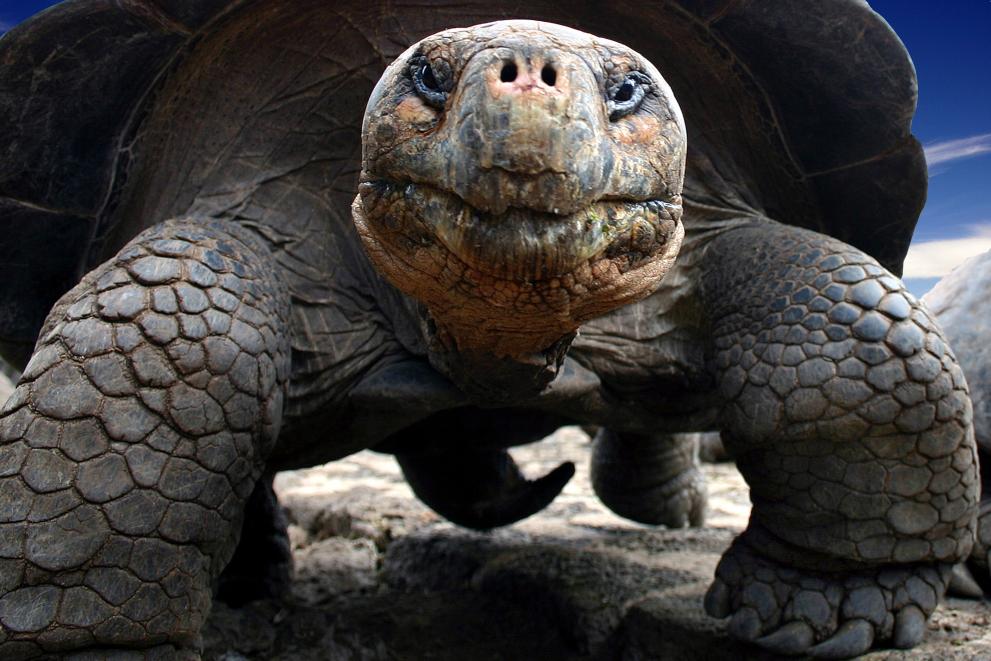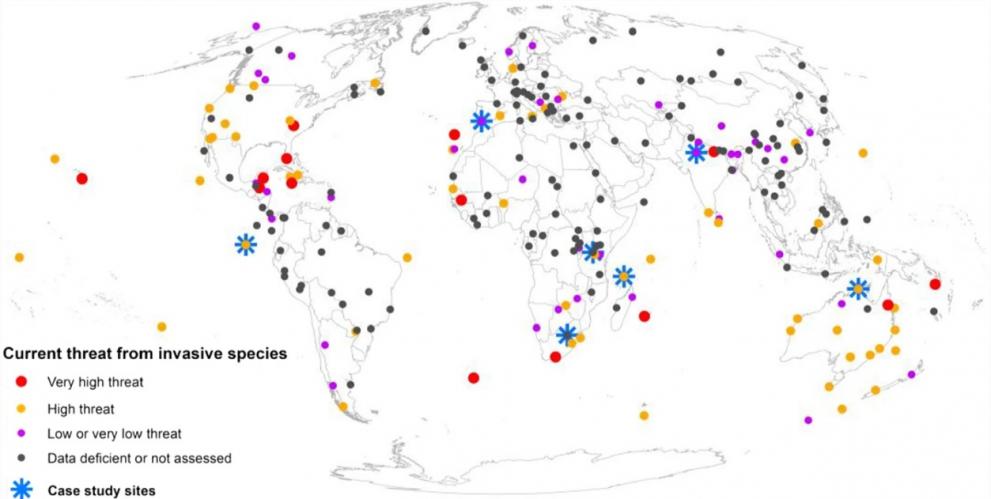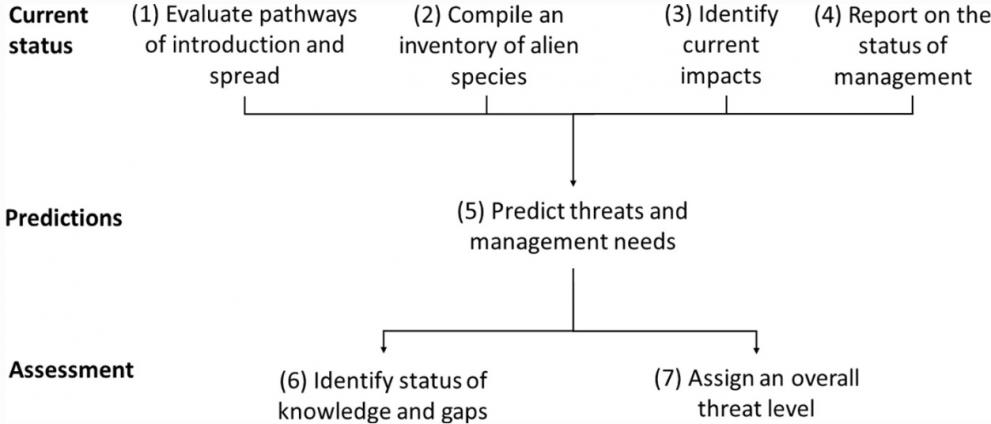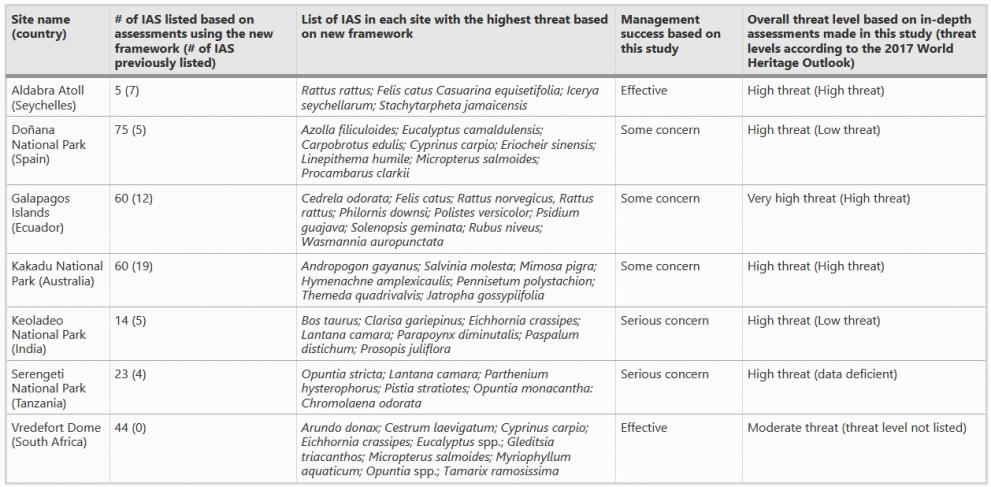
A team of international scientists has devised a new monitoring and reporting framework to help protect World Heritage Sites from invasive alien species.
The framework and the results of its application to seven case study sites around the world are presented in a recent Biodiversity and Conservation article, which revealed more invasive alien species than previously reported in almost all cases.
The authors call for immediate and urgent action to reduce the severity of these threats, and suggest the new tool could ultimately help protect World Heritage Sites like the Galápagos, Serengeti and Aldabra Atoll and other protected areas from future invasions.
Biological invasions as a threat to World Heritage Sites
World Heritage Sites are designated by the United Nations Educational, Scientific and Cultural Organization (UNESCO) under the World Heritage Convention as having outstanding universal value and conservation importance, and are recognised as the planet’s most significant protected areas.
However, biological invasions from a range of terrestrial, freshwater and marine-based invasive alien species can disrupt native biodiversity, ecosystem function and the delivery of ecosystem services, and incur extremely high financial management costs.
The International Union for Conservation of Nature (IUCN), in its global World Heritage Outlook assessment published in 2017, identified invasive alien species as the number-one threat to many natural World Heritage Sites.
JRC scientist Bastian Bertzky, an advisor to the IUCN World Heritage Programme and co-author of the research, said
“Invasive alien plants and animals are a threat to healthy ecosystems on which the diversity of life on Earth depends, and can irreversibly damage many iconic World Heritage Sites if we don’t act quickly.”
Inconsistent monitoring and reporting of biological invasions
Assessing biological invasions and their management in 241 natural and mixed natural-cultural World Heritage Sites from documents collated by UNESCO and IUCN, the team identified 290 different invasive alien species that are considered to threaten these precious sites. Some of the worst and most common problem species include rats (Rattus spp.), cats (Felis catus), goats (Capra hircus), common lantana (Lantana camara) and Argentine ants (Linepithema humile).
However, the reports on the status of biological invasions were often inconsistent: while invasive alien species were listed as being a threat to almost half of the sites assessed (119 out of 241), information on how this threat is being managed was unavailable for 40% of the at-risk sites.

For those where information was available, reports on the status of species invasions were often difficult to compare because no systematic method of reporting was followed.
According to the lead author, Dr Ross Shackleton,
“Detailed information on invasive alien species management undertaken in World Heritage Sites was available for fewer than half of the sites that listed invasive alien species as a threat.
Thus there is clearly a need for an improved monitoring and reporting system for biological invasions in World Heritage Sites and likely the same for other protected areas globally.”
New monitoring and reporting framework
The authors devised a new framework for monitoring and reporting on biological invasions, and tested it at seven World Heritage Sites across the globe.
The framework involves:
1. collecting and reporting information on the current status of biological invasions and their management;
2. predicting future threats and management needs; and
3. based on the available knowledge, assigning an overall ‘threat level’ to the protected area.

In testing the devised framework, which categorises the level of threat posed by invasive alien species as ‘very high’, ‘high’, ‘moderate’ and ‘low’; the researchers have already yielded more information than was available from previous reports.
More accurate threat assessments to support management
Applying the framework to the seven case study sites in different regions, the authors identified more invasive species in most of the sites, showing them to be a higher threat than is currently understood.

In Tanzania’s Serengeti National Park, the IUCN World Heritage Outlook published in 2017 could not assess the threat of invasive alien species due to data deficiencies. With the new framework, 23 invasive alien species were identified and the threat level was assessed as high.
In Spain’s Doñana National Park, 75 invasive alien species were identified using the framework compared with five previously reported – bringing the level of threat from low to high.
By listing all the invasive species in an area, the new framework establishes a baseline against which changes in the threat posed and the effectiveness of management efforts can be tracked over time. For example, the authors showed that the eradication techniques implemented in the Aldabra Atoll in the Seychelles have successfully led to a reduction in the number of invasive alien species listed over the last few years, from seven to five.
Next steps
The scientists recommend that funding be made available to conduct surveys at all under-resourced World Heritage Sites in order to better inform the monitoring and reporting processes of the Convention, and to involve the public in ‘citizen science’ monitoring projects.
The new framework could also be used beyond World Heritage Sites for other types of protected areas, which are essential for biodiversity conservation, often providing critical habitat and protection for threatened and endangered species.
Further information
Biodiversity and Protected Areas Management (BIOPAMA)
Digital Observatory for Protected Areas (DOPA)
Related Content
Details
- Publication date
- 1 October 2020
